“We didn’t know what we were doing!” – Plaster speaks to Mackintosh Lane
11 min read
Laurie Barron speaks to Kira Freije, Anna Higgins and David Noonan about the origins of their project space Mackintosh Lane and how their programme balances nepotism and community, spotlighting artists with something to say
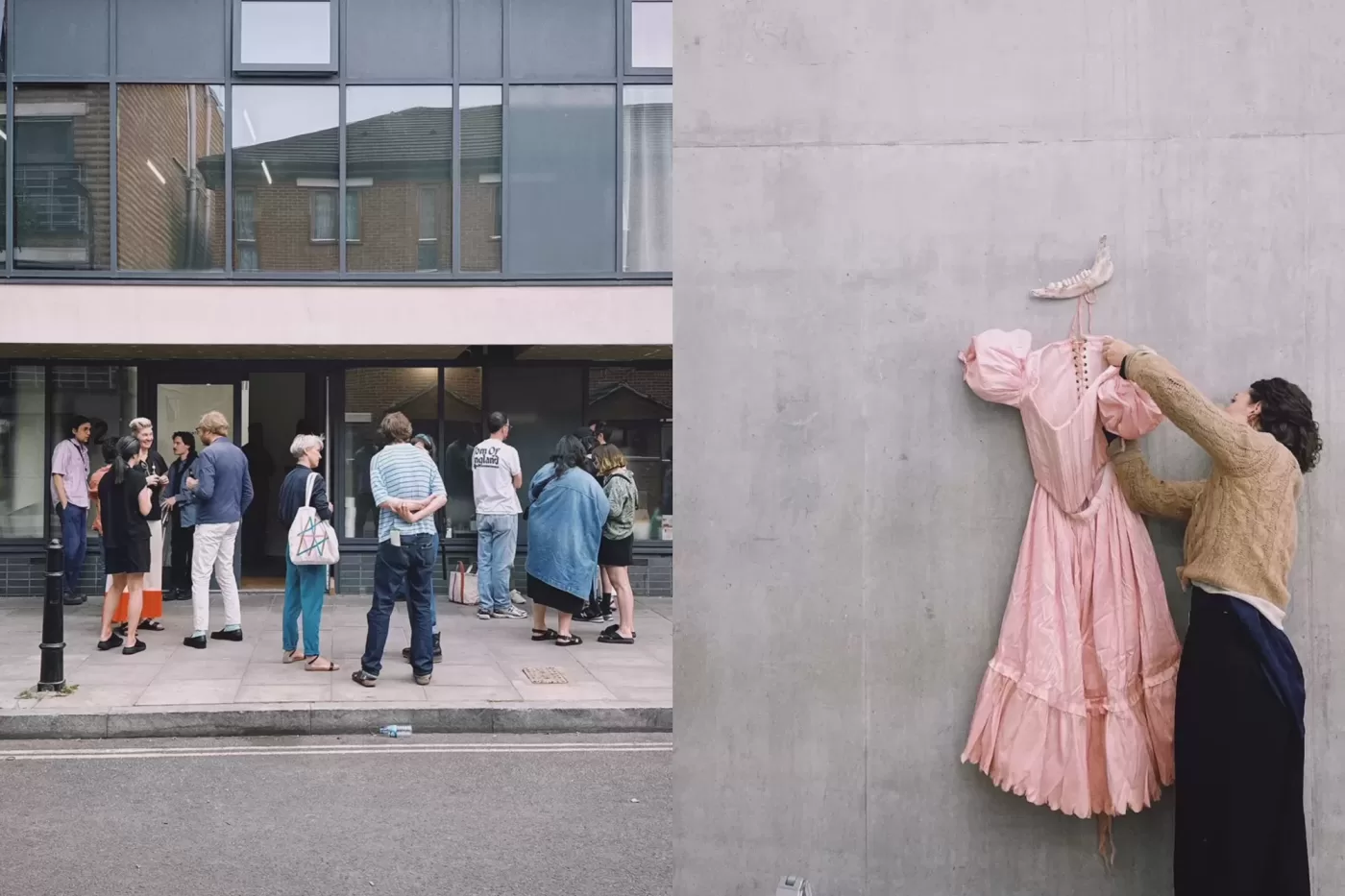
Mackintosh Lane Gallery, image courtesy of David Noonan
You might not have heard of Mackintosh Lane, a project space located inside artist David Noonan’s East London studio since 2017, but you should know about it. Co-curators Noonan and Kira Freije and Anna Higgins have an eye for spotting artists before they hit the mainstream. Their ad hoc, two-day exhibitions have gained a cult following in the London art world and a reputation for thoughtful curation and developing talent. You might recognise some of the names they’ve featured: Annika Ström, Constanze Zikos, Gabriella Boyd, Kai Althoff and Donna Huddleston. Laurie Barron spoke to Freije, Higgins and Noonan to find out more.
How did this project start? How did you meet?
Noonan: Anna was working with me as an assistant. We’re both from Melbourne and realised Melbourne has a long history of artist-run spaces. I’m older than Anna and from a different generation, so I had a different experience. We both had this connection and wanted to do something outside of work – I had this studio where we decided to start the programme.
Higgins: I was on the board of another artist-run space that’s been running for 25 years in Australia called TCB Art Inc, and David was involved in shows around that space as well. So I had the basic tools of running a gallery under my belt. David had this space and it just seemed quite obvious that this is what we should do. Then Kira got involved as she was one of our first shows.
Noonan: I’d known Kira for a while and admired her work. I guess it just started from inviting people that we liked. It was quite organic.
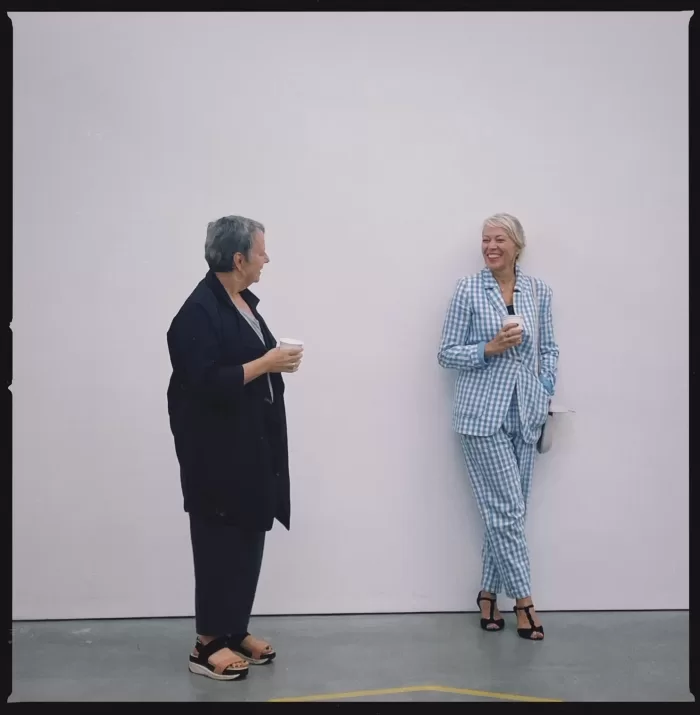
Jennifer Higgie's exhibition, image courtesy of David Noonan
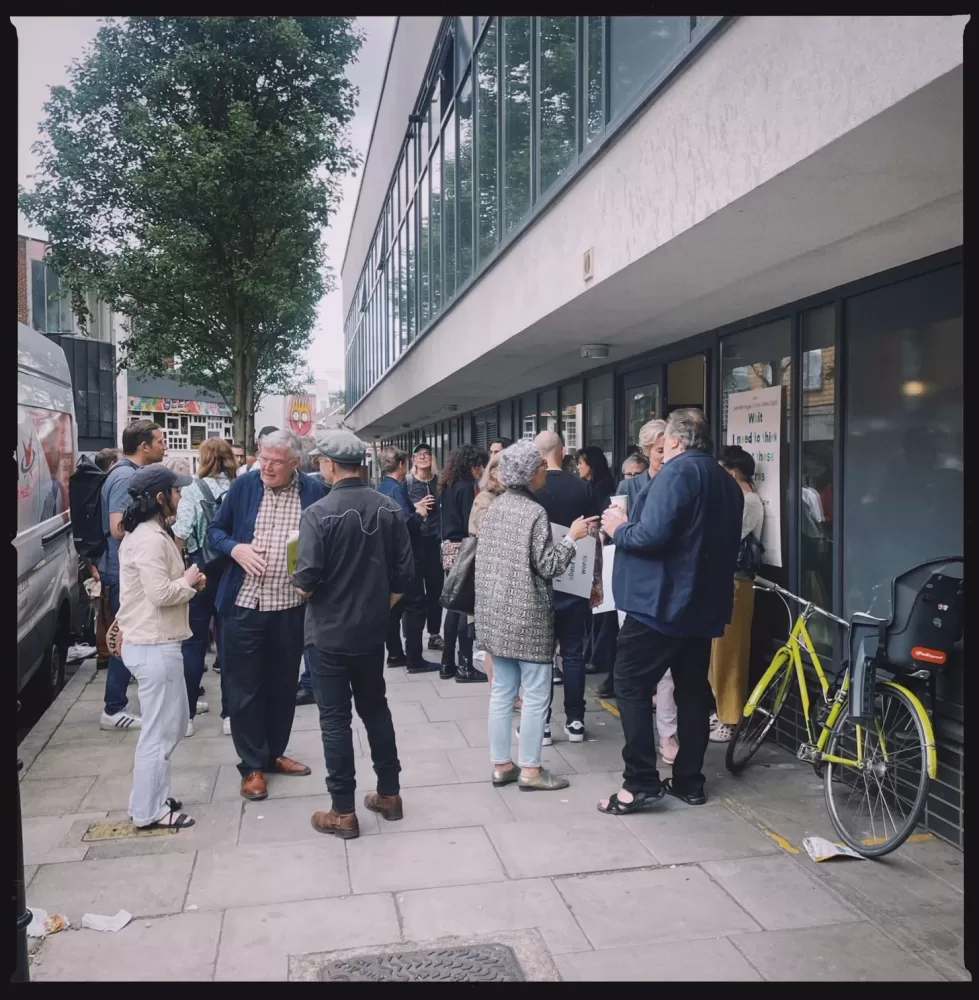
Mackinton Lane Gallery opening, image courtesy of David Noonan
What was your mission? What niche did you want to fill?
Higgins: We didn’t know what we were doing when we started. But I’d now say the mission is providing a great professional environment that’s not governmentally motivated (through grants or institutional frameworks) or commercially motivated. The programme is not led by market demand, just by us wanting to profile artists’ work. We’re not motivated by any external pressure because we are volunteer run.
Freije: You and David have a knack for picking a moment that somehow chimes with an important moment in an artist’s career. It seems that the shows often happen at a very pivotal moment in someone’s practice; it usually comes when they haven’t got another opportunity.
Noonan: Having been involved in the commercial art world for such a long time, it felt nice to do something that wasn’t commercial but really about bringing people together to create a real sense of community. Because I had this space, I wanted to kind of give something back as well.
Higgins: I think Oscar Enberg is a good case study. When David suggested he did a show he really wasn’t being looked at at all. Now, he just had a show with Brunette Coleman, who also presented the work at Liste, and things are going well for him now. So all the talent was there. But there are a lot of artists, I think, who have sort of missed that ‘recently graduated’ boat…
Noonan: Or people not from London! Oscar’s from New Zealand. I’ve known him for around ten years, followed his work for a long time and was a big admirer. But I knew he didn’t really have an audience in London. The recent show we did was with Constanze Zikos who is in his 60s. He’s a really well known artist in Australia and has an incredible career yet is totally unheard of outside of Australia.
Higgins: Or someone like Nat Faulkner – I just knew him in London and said ‘this is a really talented artist whose work is quite experimental, who’s just not been given an opportunity to showcase it at an ambitious level’. I think it’s very rewarding when you feel like you’ve helped. Being an artist can be quite a selfish, self involved pursuit, and doing something where you’re helping other people is good for you spiritually and mentally.
 Something critical is that we don't show people based on ‘Oh, they're hot right now’ or who could add to our profile. It's about helping people rather than building a gallery.
Something critical is that we don't show people based on ‘Oh, they're hot right now’ or who could add to our profile. It's about helping people rather than building a gallery.

Anna Higgins
Tell me a bit more about the architecture of the space. It’s gorgeous and carries a kind of museum-like sanitised aura. Typically, when project spaces come to mind, you don’t envisage this level of technical fabrication. I understand it’s an artist studio, so I’m presuming that for the shows, everything is cleared out back to factory settings?
Noonan: Upstairs is a smaller space which I predominantly work in, so, and I keep downstairs empty, and I use it when I need to. I use it for things like putting up work to look at. The studio is almost like a machine, it kind of functions on all these different levels. I also rent it out for fashion shoots and stuff like that.
It’s basically the downstairs of a big block of flats. Myself and three other artists, Charles Avery, Goshka Macuga and Michael Raedecker bought the building around 12 years ago and renovated it into our own purpose-built spaces.
Given it’s a nonprofit space, do you make sales?
Higgins: We do to a certain extent and take 25% commission, but we make it clear to the artist that is not the intention of the show. And that money just goes back into the kitty of paying for photography, beer, shipping and logistics.
What are you looking for when you select an artist?
Freije: The spirit of the programme usually comes from people in our orbit: whether geographically close or further afield. People that you are conscious of making interesting work that maybe you’re the rest of your environment, group and community are not seeing.
Higgins: It’s quite frictionless, because I think our tastes are really aligned, which is probably why the program feels quite consistent.
Something critical is that we don’t show people based on ‘Oh, they’re hot right now’ or who could add to our profile. It’s about helping people rather than building a gallery.
Freije: There’s also been amazing group shows bringing people together like Anna Patterson and Daniel Lipp. Then the Silent Tourist show with Tom Worsfold and Gabriella Boyd (Sara Knowland / Ellie Pratt / Barbara Wesolowska).
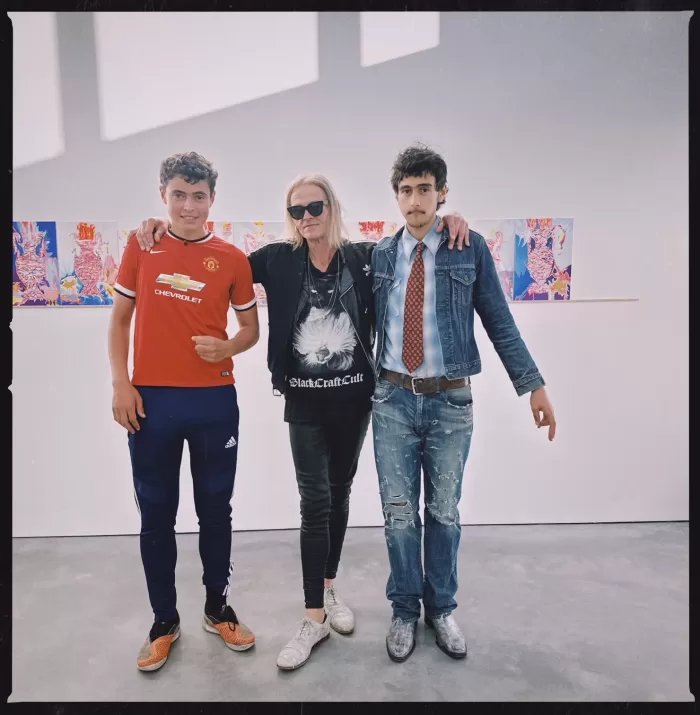
Constantine Zikos' exhibition, image courtesy of David Noonan
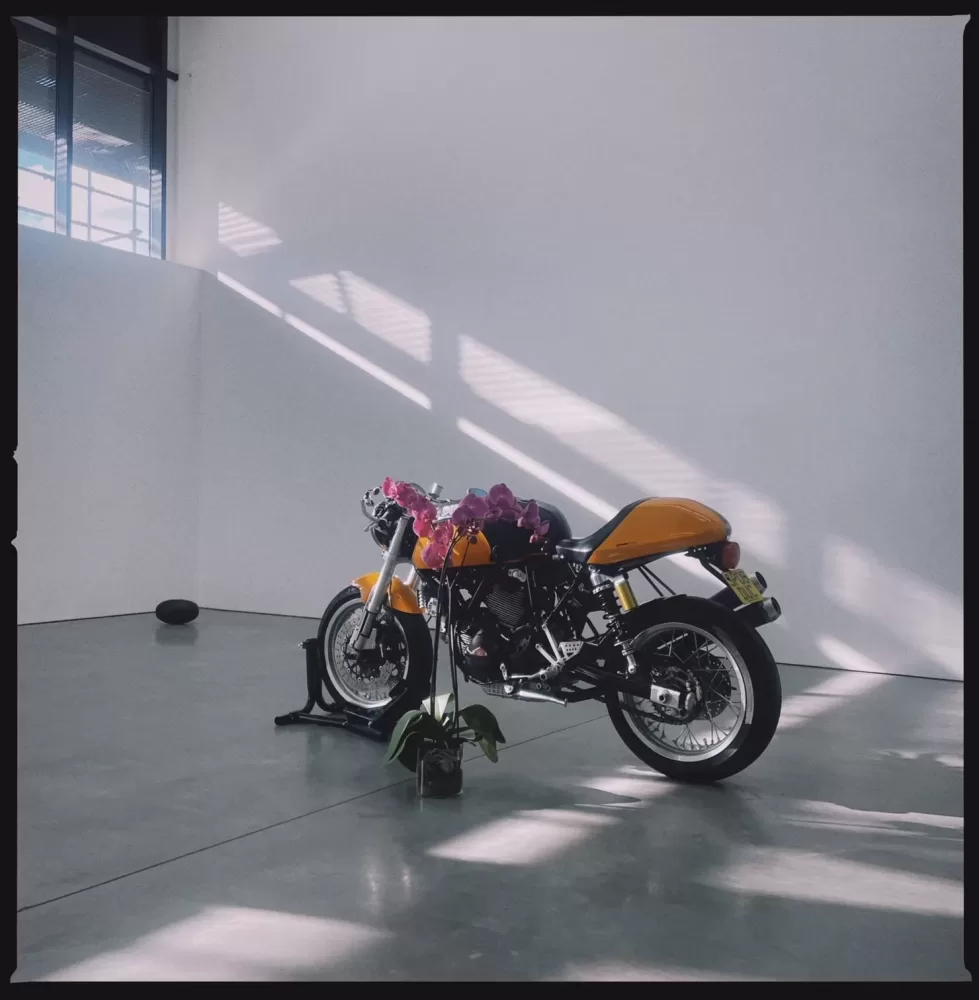
Simon Moretti's exhibition, image courtesy of David Noonan
And you also work with guest curators, like Jennifer Higgie who previously edited Frieze?
Noonan: I’ve known Jenny for like, 30 years, went to art school together in Australia and we’re really close friends.
Higgins: But it’s not always so nepotistic, David you met Paul Becker through Instagram.
Noonan: I followed Paul on Instagram and didn’t realise he lived in the UK. I just DM’d him and said: ‘If you’re ever in London, would you like to do a show?’. We became friends and he’s extended beyond his show here – he’s curating a show in November.
There’s definitely no kind of pressure on anyone to keep coming up with shows. We don’t want to do too many either, because, you know, they’re a lot of work and only up for two days; you almost want to space them so they’re quite special.
What are each of your notable highlights and memories over the years?
Freije: Probably the ones I was most involved with: Anne Patterson; the Silent Tourist group show; and Julie Gorn Schwartz’s film – the space is amazing for video work. Also, my exhibition was the most important opportunity I probably ever had, it’s someone that you admire, believing in you to do something, especially at a certain time after graduating, when things can be difficult.
Noonan: I mean Oscar’s show was really great. Peles Duo were in the show that Anna curated and I’ve had a long history with them, since they had a speakeasy underground bar back in the 2000s (later having spaces in Stoke Newington and Los Angeles). At the opening of Anna’s show, I just said “Hey guys, do you want to do a gallery swap?” They said yes, so Anna, Kira and myself did a show in their Berlin space, which was fantastic.
Higgins: For me, working with Damiano Bertoli, who passed away about three years ago. Work from that show is now in collections of the National Gallery of Australia and the National Gallery of Victoria. He was a mentor of mine. I also had the privilege to curate my own show. Having the opportunity to do that without any restrictions really helped my thinking.
Who have been your biggest supporters and collaborators?
Higgins: Simon Moretti is a big supporter. Also my partner, Matthew Berka, who is a filmmaker curating a screening coming up.
Noonan: Australians tend to turn up! Also students from the Royal Academy Schools, where Anna and Kira are alumni.
Higgins: We’ve been conscious at times not to make this a Royal Academy outpost!
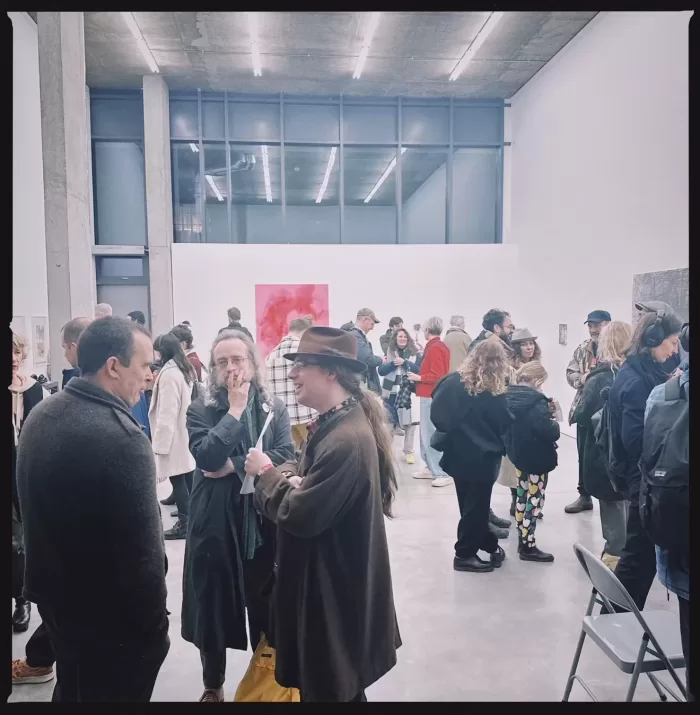
Mackintosh Lane Gallery opening, image courtesy of David Noonan
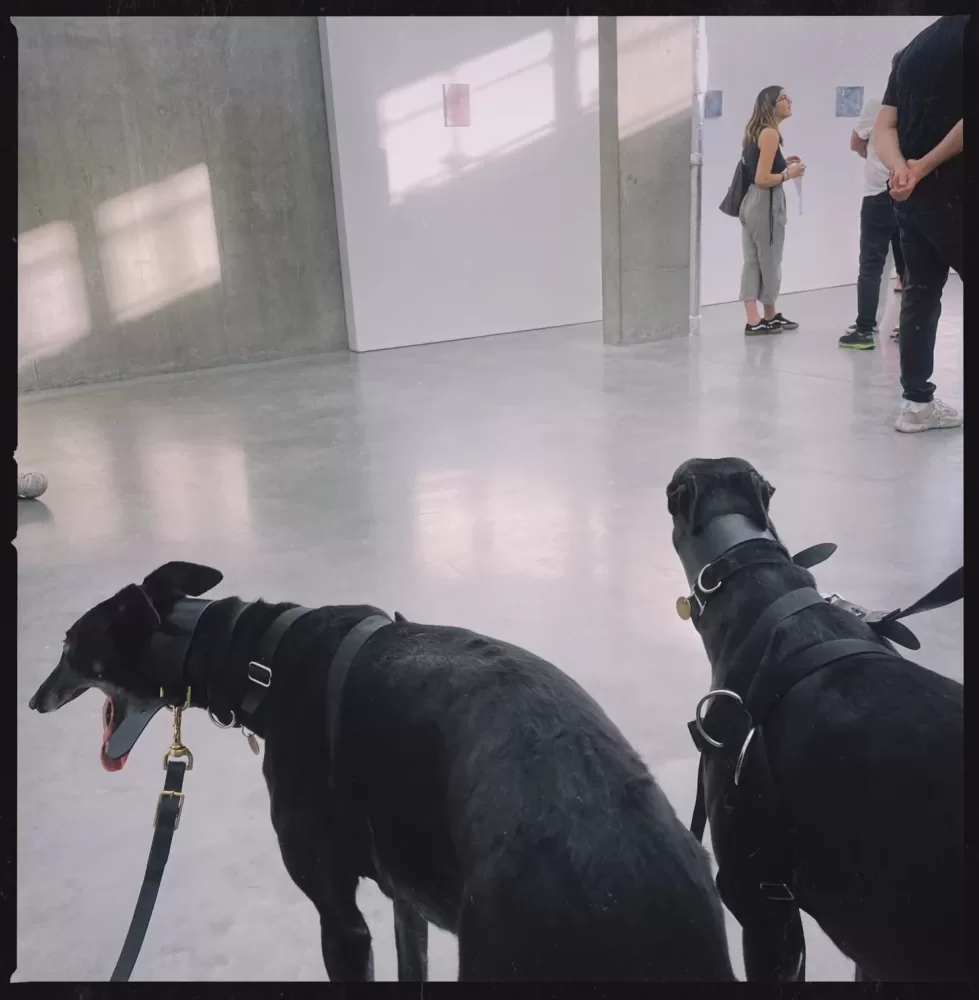
Mackintosh Lane Gallery opening, image courtesy David Noonan
Are you open to proposals or pitches?
Freije: We probably don’t just because of our own time constraints. It’s always amazing to discover a new artist and learn more about their career, but the way we organise our programme is so informal in a way.
Higgins: When I was younger, I wondered those things too, like, how do you get involved with galleries? The people who have been involved often have been a result of them showing genuine interest in our community and being present at the shows. You can’t really fabricate that. Our programme is balanced between nepotism, community and trying to be generous to younger artists and more mature artists that can be in that mid-career desert.
What projects do you have coming up?
Higgins: The show coming up in March next year with Michael Dean and Australian artists Lou Hubbard and Susan Jacobs will be really exciting. They are going to be making a collaborative installation together which create a dialogue highlighting the strange consistencies between their practices. In October, we have a film screening with established and emerging film artists including David, Ben Rivers, Nina Porter and Linda Montano.
Noonan: Then Paul Becker is curating a show with three women artists: Nigin Beck, Nadia Hebson and Marietta Mavrokordatou. It’s an international exhibition – Nigin was a special guest in Oscar’s previous show, Marietta is a young graduate from Slade, and Nadia is the Head of Graduate Painting at Slade.
Peles Duo’s exhibition ‘tools of tools’ opens at Mackintosh Lane this Saturday 28 September, 6–8pm